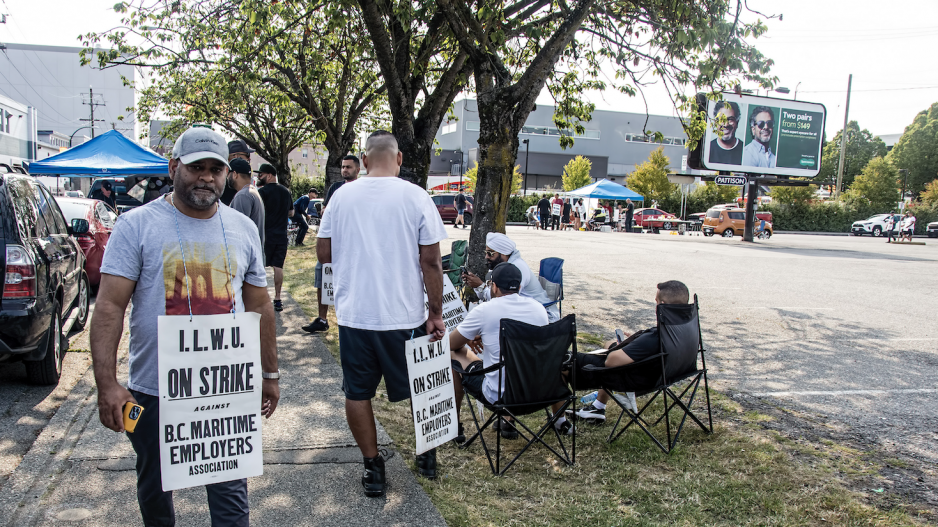The road to reaching a new collective agreement to end what could be a lengthy and devastating shutdown of sa国际传媒’s maritime supply chain is littered with speed bumps and spike belts.
Here are two key obstacles on that road.
From the International Longshore and Warehouse Union sa国际传媒 (ILWU) side of the fence:
•Automation. The that unions and workers in sectors up and down the supply chain face. Their industry is not alone. Automation is moving into a wide range of transportation industries and business sectors. In the global container terminal business that march is already well underway in Asia and at major container cargo hubs in North America such as the San Pedro Bay (Los Angeles-Long Beach).
There has been some automation incorporated in local container terminals. is one example. It increased Deltaport’s overall capacity 33 per cent and its ability to move railcar boxes by 50 per cent.
But in the eye of the automation storm for ILWU leadership is the $3.5 billion Terminal 2 container handling expansion project at Roberts Bank. The terminal recently secured approval from the federal government.
Aside from the environmental controversies surrounding Terminal 2, the union has raised red flags over the amount of automation that will be incorporated in the project’s operations.
Despite Vancouver Fraser Port Authority assurances to the contrary, ILWU president Rob Ashton maintains that – unlike GCT’s rail densification project, which incorporates some automation – Terminal 2 will be fully automated.
In a recent interview with BIV, he said the VFPA has told the union that “all the horizontal equipment [at Terminal 2] will be automated – which is everything.”
The difference between the GCT and Terminal 2 projects, he said, is that the automation incorporated at GCT Deltaport was done in co-operation with the union and was mutually agreed upon.
According to a 2019 report prepared by Prism Economics and Analysis for the ILWU, marine terminal automation could eliminate more than 9,200 marine terminal jobs across sa国际传媒
From the BC Maritime Employers Association’s (BCMEA) side of the ledger:
•Wages, benefits and other contract demands. In its July 3 statement expressing frustration over ILWU sa国际传媒’s negotiating stance, the BCMEA pointed out that the median annual ILWU sa国际传媒 salary in 2022 was $136,000, plus benefits and pension. The maritime employers group added that sa国际传媒 longshore wages have increased 40 per cent over the past 13 years and 10 per cent since the pandemic began.
It added that the union is attempting to “aggressively expand” its scope and redefine regular maintenance work “far beyond what is set out in the industry-wide agreement, which has been legally well established for decades. Changing this definition would result in immediate and significant impacts to terminal operations. Under the current collective agreement, the ILWU exclusively supplies the labour force, however, it has been consistently unable to fulfil the trades work they have jurisdiction over.”
Wage and benefits increases in the previous ILWU contract added approximately 14.6 per cent to the overall port worker employee costs over the term of the five-year deal.
This time, the ILWU seeks wage increases of 11 per cent in Year 1 and six per cent in Year 2 for a total increase of 17 per cent over two years. According to BCMEA numbers, inflation allowances and other increases would push the total hike in employee costs to 21.8 per cent.
Negotiating around those two speed bumps and other outstanding contract issues is going to take some serious flexibility and compromise from union and employer leadership.
Local, regional and national economies will be hoping that there remains a measure of that flexibility on both sides of the bargaining table.
twitter.com/timothyrenshaw




